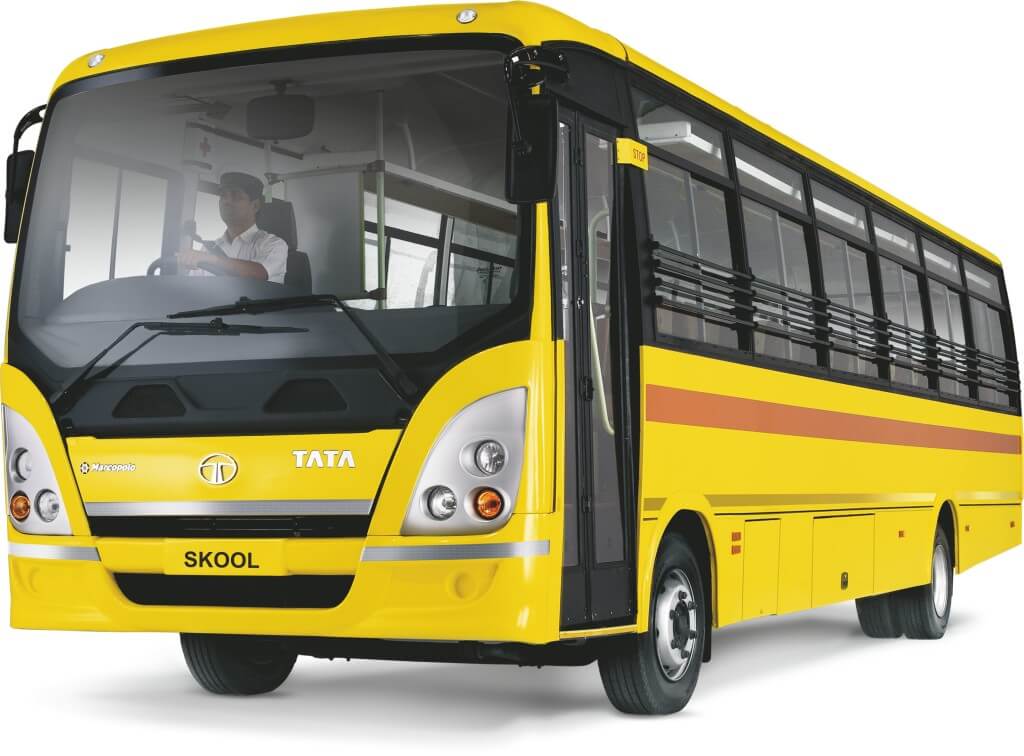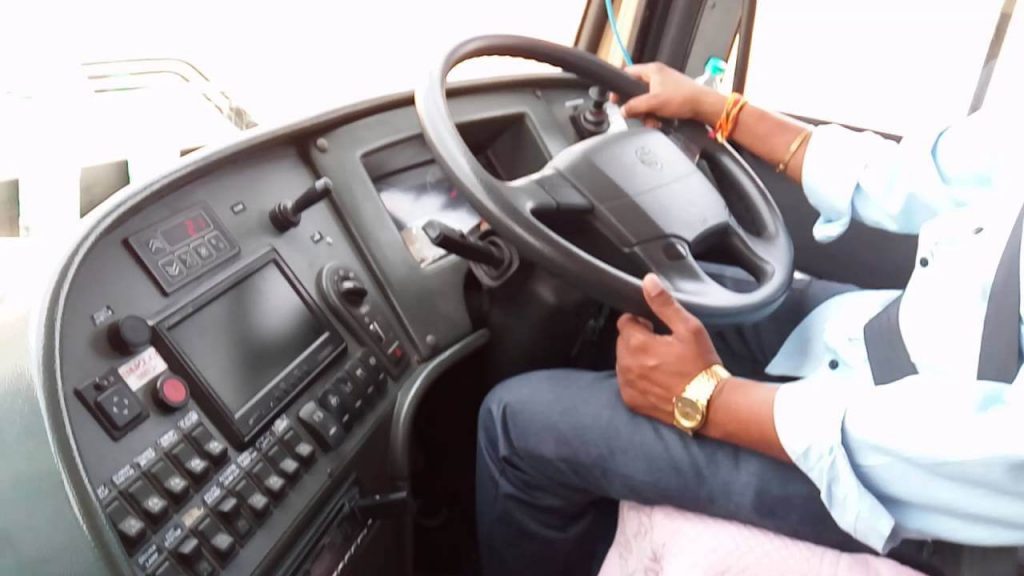
About 27 kids died in Himachal Pradesh when their school bus met with an accident a few years back.
Around 10,000 children below the age of 18 are killed in road accidents every year in India, according to data provided by the Union Ministry of Road Transport and Highways (MoRTH).
Road traffic accidents are the foremost cause of death among children aged between 6-14 years, the report said.
This is a matter of serious concern as millions of children travel to school and return back home by bus every day in India. This is in addition to the children who walk, cycle or use motorized means of transport. For them, it is a routine and necessary activity.
The Supreme Court of India issued safety guidelines for school buses in 1997 after 27 kids were killed in an accident in Delhi’s Wazirabad area. Among other things, the court suggested that every vehicle should have a conductor who has studied at least till Class 10.
But even today conductors are missing in many vehicles. Even 24 years after the Supreme Court guidelines for safe school transport, most operators still flout rules and endangering lives. The children’s ride to school is often fraught with danger because of rash and negligent driving. Drivers using cellphones and overcrowded school vehicles are a common sight.
This is a serious problem as the number of registered motor vehicles in India is increasing by over 12 % per year. As compared to 112 million registered motor vehicles on India’s roads in 2010, and there could be 500 to 600 million vehicles by 2030.
The Government of India is aware of this problem and is working on a Draft National Policy for the Safety of Transporting School Children. Experts from the National Commission for Protection of Child Rights (NCPCR) have suggested that if a driver is fined more than twice a year, he should not be employed to drive school vehicles.

The answer lies in using the available technology to not only making school buses safe and secure but also smarter. There are many new and innovative technologies on the market today that are being deployed on buses to increase safety and security in and around the bus. Some of these technologies to enhance school bus safety include:
Real-Time GPS Tracking
As soon as the children board the bus, the parents and school authorities can access real-time information about the school bus location. GPS tracking can be a great help to anxious parents waiting to pick up their child by informing them 10 minutes before the bus reaches the scheduled bus stop. This could prove to be a blessing in disguise for families in which both parents working as they don’t have to wait at the bus stop and can simply check on the bus location from an app. Besides, the GPS tracker can help the fleet owner keep track of the performance of the school bus driver, speed of the bus, unscheduled stops, and fuel consumption etc.
RFID Trackers
Radio Frequency Identification Device (RFID) tracking technology – with the help of RFID tags attached to the student’s ID cards can provide real-time information to the parents and the school authorities. Each student would have to swipe the RFID cards in the card reader every time they enter or exit the bus. This would in turn send a notification to the mobile phones of their parents and school authorities.
Motion Detectors
Transporting multiple children in a large vehicle has several safety complications. The drivers are expected to check the whole bus and ensure that no one is ‘missing’ and every student gets in or gets down at their respective stop. This means that the driver’s responsibility starts from the moment he himself enters the bus and ends only when he parks the bus at the bus depot. The unfortunate death of an innocent child who got left behind because he fell asleep in a school bus in Dubai is a reminder that error and neglect can always happen.
Buses are huge, and even the most expert driver can’t see all that is happening internally or externally around the bus at all times. It only takes a split second for a child to run into a danger zone where the driver can’t see them, and tragedy happens. The only solution is to have motion sensors capable of sensing when something passes by or blocks the front or back of the bus. These sensors can detect the presence of any person or object in the ‘blind spots’- immediately in front and back of the vehicle, where the driver is unable to see. Sadly enough, every time a school bus stops, children tend to run amok even at the risk of being hit by their own school bus.

Video Surveillance:
According to a study, most accidents happen when the school bus halts to allow children to get down but the other vehicles on road are moving. This situation can be avoided if cameras are mounted at low angles in front and behind the bus. A rear-view camera also comes in handy to track vehicles that try to overtake the school bus when its stop sign is on. Rearview or backup cameras help the drivers ensure there are no pedestrians walking directly within 10 feet in front or behind the school bus. Today there are cameras available that can provide a 360-degree bird’s-eye view of the exterior of the bus instead of split screens. This helps the bus drivers get composite real-time video images of everything that is happening outside the bus, without constantly switching views. If the driver needs a closer look, he can toggle between cameras for a closer look. This technology is especially useful as most accidents involving a school bus happen outside the bus.
Another advantage of this technology is that the real-time feed from multiple high-resolution CCTV cameras placed inside the bus, can be accessed at a central location by the school authorities, and prompt actions can be taken in response. The authorities can not only monitor student behaviour but also keep a lookout for strangers or suspicious objects placed in the bus and many other potential security threats.
Another even more shocking aspect of the problem is sexual misconduct by the drivers, conductors or other passengers in the bus. The presence of cameras that cover every nook and corner of the bus can ensure that no one dares to break the rules or behave inappropriately.
Student Behavior Tracking System
Bullying in schools is not just confined to classrooms. It can occur in school buses as well. Therefore, there is a need to monitor the conduct of students on the school buses. These modern digital cameras can help record audio as well as video, to know exactly what is happening inside the school bus, and keep drivers’ attention on the road. Consequently, students’ involved in mischief can be dealt with properly with useful evidence. The student behaviour tracking system can help drivers to communicate with administrators and parents to control the students and ensure that they are safe.
Prevent Driver Misconduct:
Accidents usually don’t happen by chance. Most often accidents happen because one of the drivers on road was untrained, fatigued, drunk, using his mobile phone, or just not paying attention. On-board sensors can monitor driver behaviour and ensure that the drivers follow the rules. Defaulting drivers, who don’t drive carefully and within speed limits can be easily identified.
Wi-Fi
Around 30 per cent of all students do not have high-speed internet at home – causing an internet gap the moment they leave the classroom. To overcome this, many schools are providing Wi-Fi in school buses. This helps students complete their homework, exchange notes or play games on the bus. This in turn keeps the students occupied and prevents mischief.

Automatic Door Entry System
Most modern buses have push buttons that automatically open and close the school bus doors and thus prevent driver fatigue and shoulder pains.
Mirror Grid Systems
Another technology that has improved school bus safety is the mirror grid. These mirrors enable the driver a better vision of the surroundings especially people and objects in the accident-prone proximate or danger zone which is at least 12 feet in front and around the bus
Air-Cushioned Seats
The introduction of air-cushioned seats has enabled the drivers to sit in a comfortable posture and with better lumbar support than before.
Computerised Diagnostics
Computerised diagnostics is a useful technology available today. It helps identify problems and determine the need for repairs. The maintenance and service schedules of a vehicle can also be accessed to check if the vehicle is due for servicing. Drivers can carry out inspections to ensure that the bus does not break down on road due to any electrical or mechanical fault.
Technology is making the journey from home to school and back in the school bus safer than ever before. School buses are getting highly sophisticated. Both the schools and parents of children are prepared to pay a premium towards better travel safety and comfort. The safety and security of children is today not a luxury but an absolute necessity. It is something that cannot be taken for granted.
Can we really afford to take even the smallest of risks?

